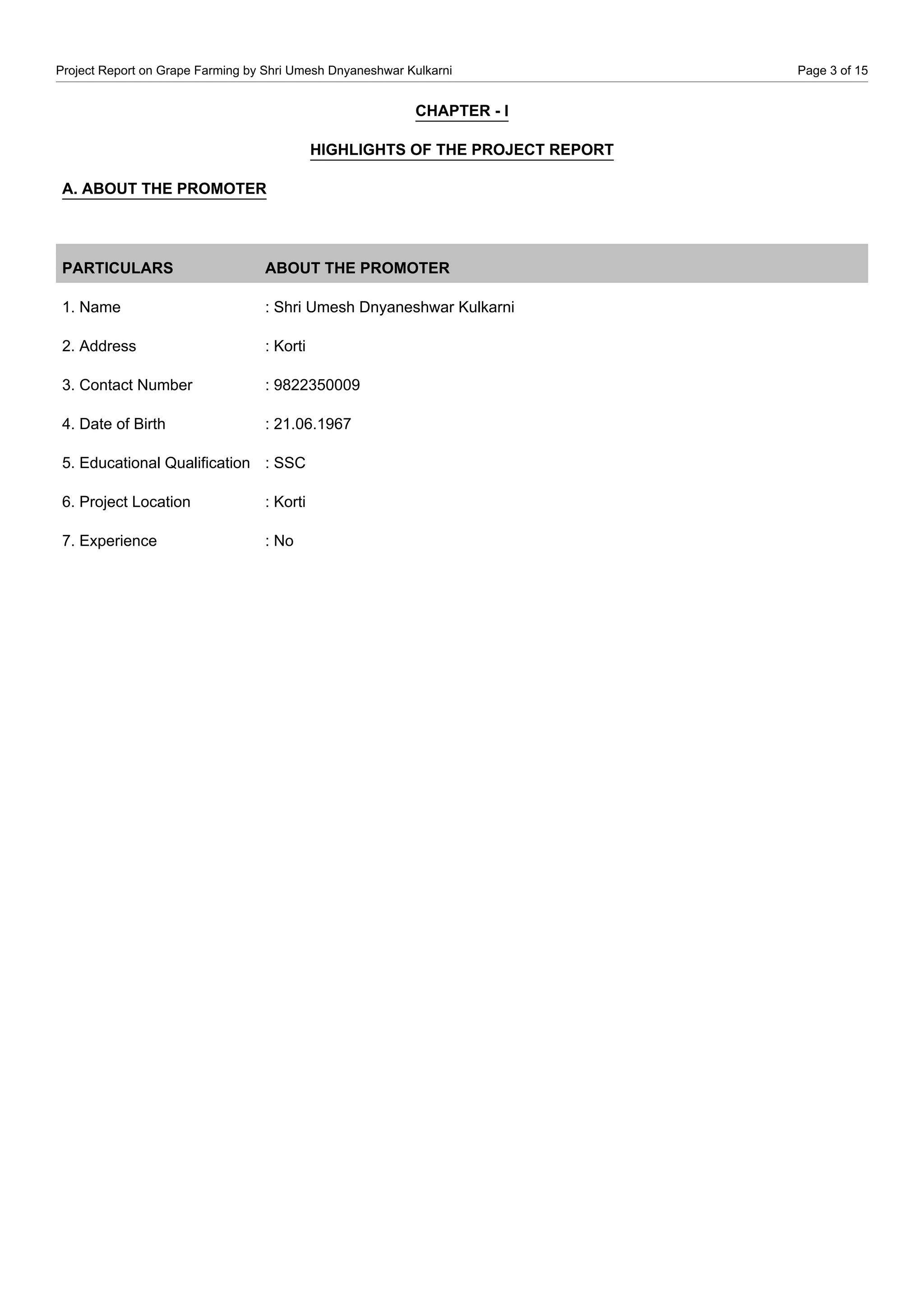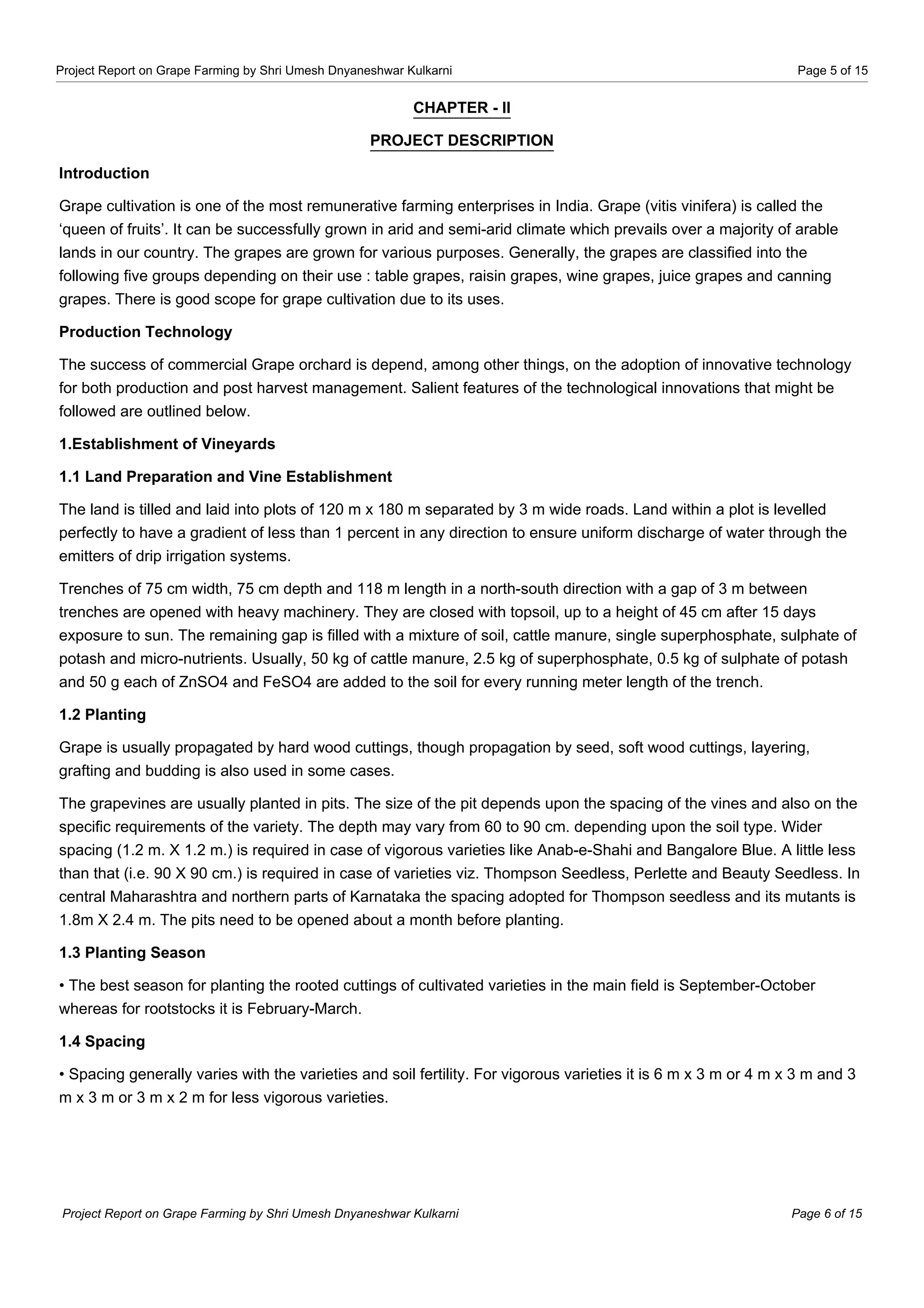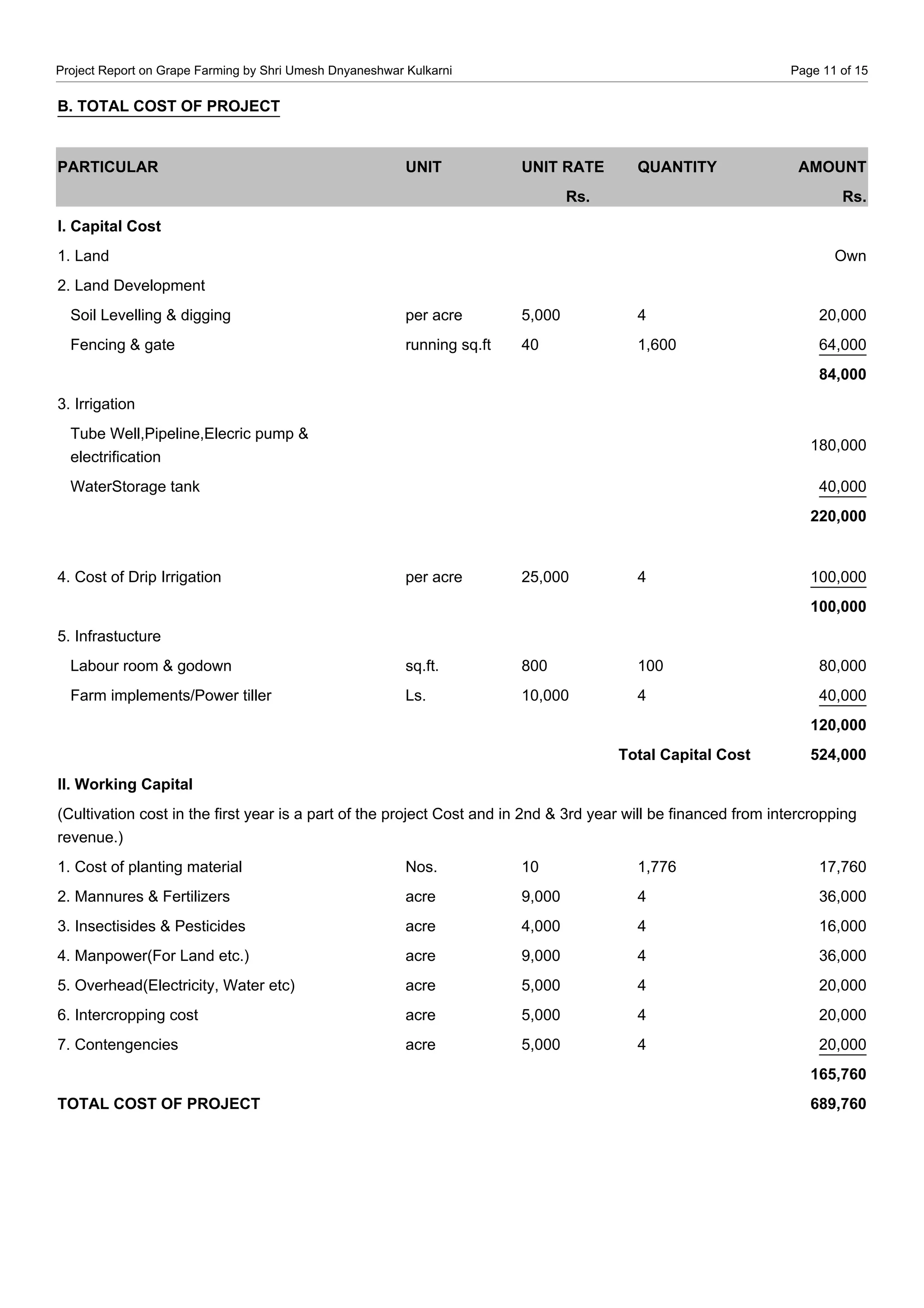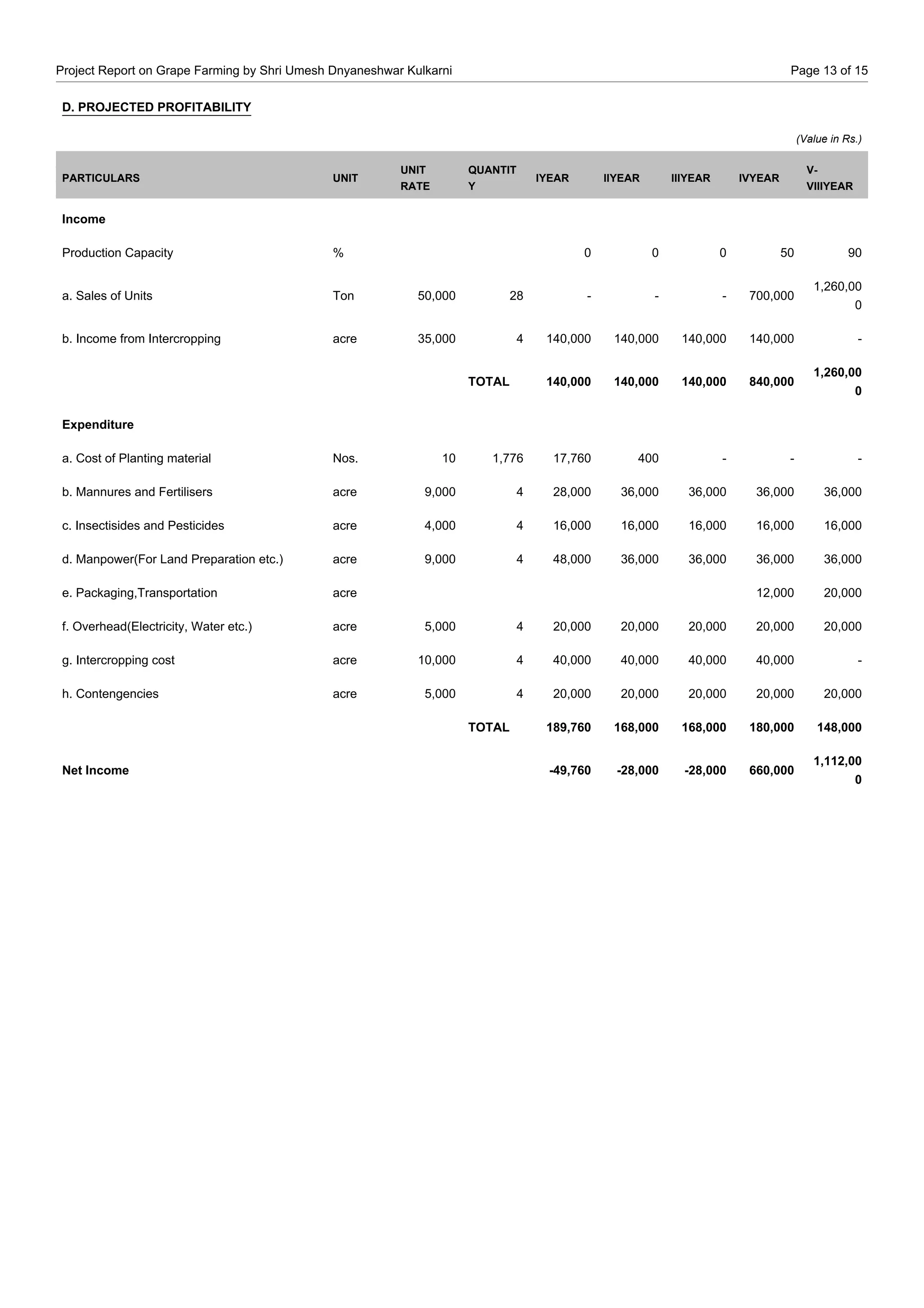This document provides details about a proposed grape farming project in Korti, India. It includes information about the promoter, Umesh Dnyaneshwar Kulkarni; the 4 acre project area to be used for Thompson grape variety cultivation; and projected costs, financing, profitability, and financial analysis of the project over 5 years with a 3 year moratorium on loan repayments. It also summarizes the grape production technology, market potential in India and for exports, and a SWOT analysis of strengths, weaknesses, opportunities and threats for the grape farming industry in India.














